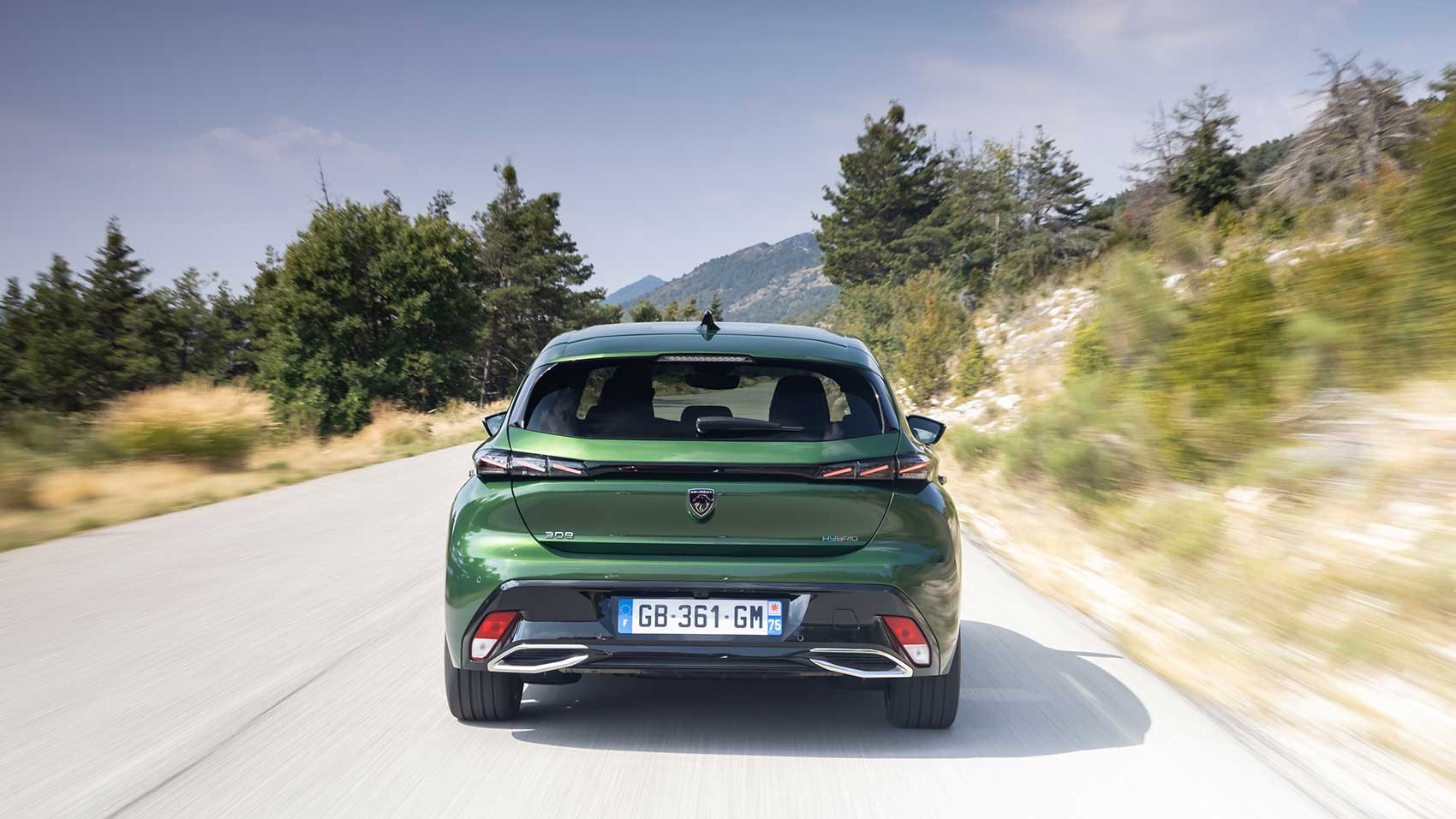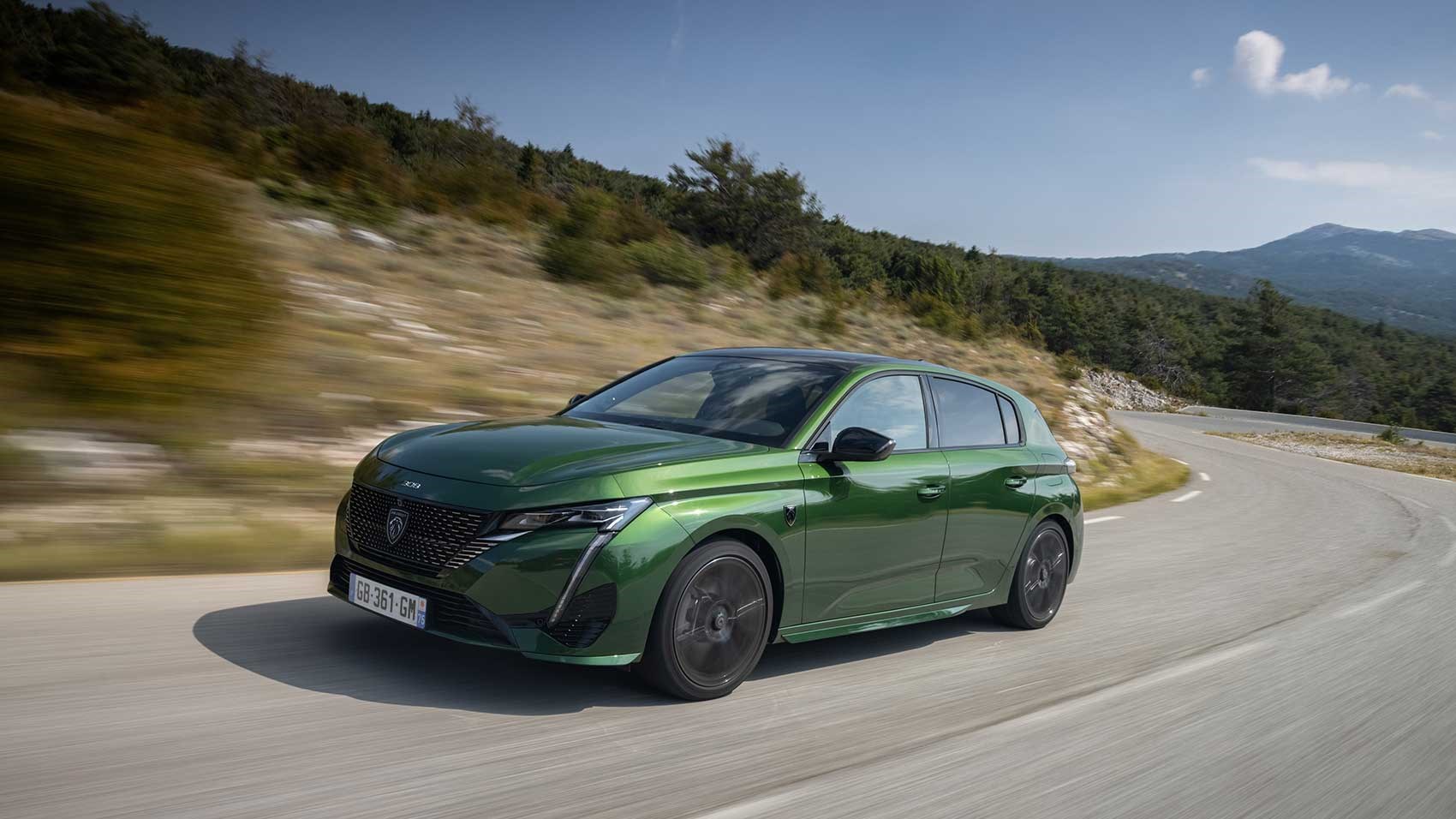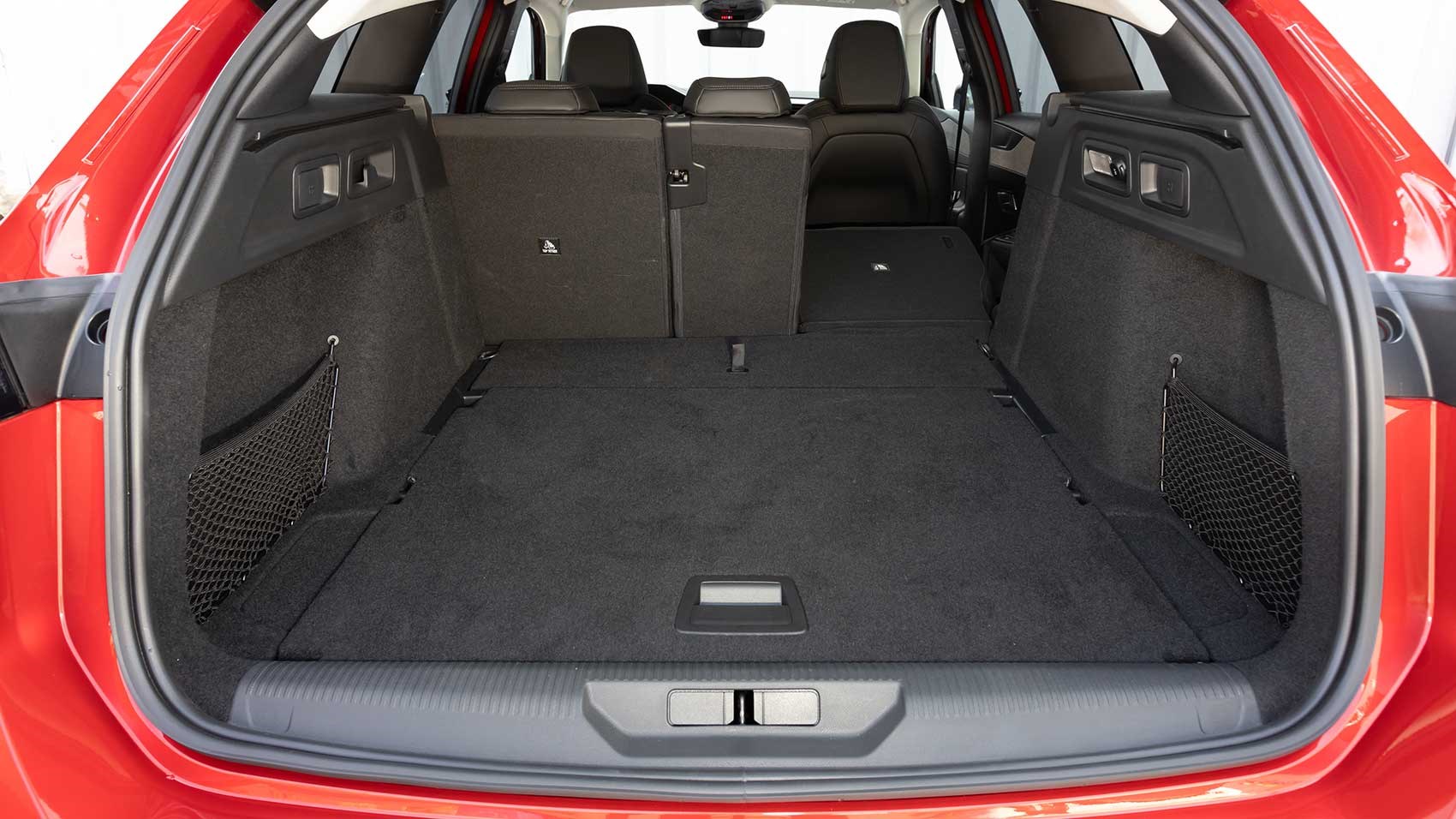► First review of new Peugeot 308
► Hybrid engines and lots of tech
► UK sales start Jan 2022, from £24k
Peugeot’s 308 is all-new, available as a plug-in hybrid for the first time and pushing upmarket to challenge premium cars such as BMW’s 1-series and the Mercedes A-class. Set for UK market introduction in January 2022 as a five-door hatchback and SW estate, read on for a full review of the hybrid and petrol engines, plus key prices and specs for both bodystyles.
Push upmarket! Pull the other one, Peugeot
Truth be told, Peugeot has long benchmarked Volkswagen’s Golf for years on materials and quality, but this model sets its sights even higher. How? The exterior design mimics the 1-series’s long nose/cab-backwards proportions, the new touchscreen looks slick and acts pretty quick, there’s a ‘Hey Mercedes’-style voice assistant to change the air-con or radio station, and lots of driver assistance technologies.
The cockpit is, without doubt, a classy place to spend time. The layered dashtop cascades forward like a wave, overhanging lovely aluminium or fabric sections, accented with welcoming LED lighting (from second-tier Allure trim level). GT and GT Premium trims also bring a digital driver’s binnacle with a 3D effect designed to bring key info to the front, though it’s a bit of a jumble unless on the sparsest setting.

The standard 10” touchscreen is underscored from Allure trim up by a bank of ‘i-Toggle’ shortcut switches, which you can customise with your favourite functions that respond with a buzz of haptic feedback. On the hybrid, I pulled in the Energy function, to keep an eye on hybrid system operations. The graphics are nice enough but not in Mercedes’ wondrous league, and the touchscreen peskily plays for time between selections with an animation that brings to mind Moses parting the Red Sea.
UK engine range spec details
Peugeot is simplifying mainland Europe’s broad line-up for British customers, with only the high-power combustion engines offered, and just the eight-speed automatic transmission at launch. That means a 130PS Puretech petrol engine and 130PS BlueHDi diesel, each mustering 128bhp. Both plug-in hybrid derivatives – badged 180 or 225 (badged after their joint petrol-electric power outputs) – will be offered though.
These combine a 1.6-litre four-cylinder petrol engine with an 81kW electric motor sandwiched against the EAT8 auto ‘box. The new 308 is strictly front-wheel drive, and rides on McPherson struts up front and a twist beam rear suspension. While the Ford Focus, Merc A-class and others may confuse customers by offering posher independent rear axle on upmarket models, Peugeot has a one-size-fits-all approach to cut complexity and save weight, says engineering chief Jerome Micheron.

UK prices start at £24,000 for a Puretech 130 in Active Premium base trim. Standard features include the touchscreen, DAB radio and mirror function for Apple and Android smartphones, rear parking sensors, 16-inch alloys, black mirror caps and ‘claw-effect’ LED rear lamps. There’s also a generous helping of driver safety aids: lane keeping assist, speed sign recognition, driver attention monitoring and active braking (with the system able to see pedestrians and cyclists in the day).
Okay, let’s get driving
We start in the Hybrid 180, which costs from £33,000 in Allure Premium spec and is a VW Golf GTE rival. This has a 12.4kWh battery good for up to 37 miles of pure electric range, and it meters that out to good effect over our test route. The 308 automatically switches between electric, petrol or both, depending on your speed and traffic conditions.
It’s by far the quietest 308, naturally given near-silent electric running and an extra portion of compensatory sound-proofing. When the 148bhp four-cylinder petrol engine strikes up, it’s a muted, ghostly murmur in the background. The 308 hybrids cruise quietly on Canne’s carpet-like autoroutes, with some wind noise around the windscreen the most obtrusive sensation.
Push a rocker button to switch from Hybrid to Electric: it feels neighbourly to waft through 30kmh villages in quiet, zero emissions mode, but the Hybrid 180 also surprised me by accelerating stoutly on a steep uphill motorway climb from 75 to 120kmh, without any need to call in petrol reinforcements.
How does the 308 hybrid handle?
The new 308 continues Peugeot’s i-Cockpit philosophy, which combines those digital screens with a small steering wheel over which you peer at the instrumentation. Combined with pretty quick steering, it’s designed to feel agile. With the steering wheel’s hexagonal shape, it’s a bit like turning a leather-clad 50 pence piece.
Its weighting is nicely judged, with a light, fluid feel at low speeds, and quick enough responses off the dead-ahead. On twisty mountain roads, you do get a sense of the hybrid’s extra weight (a whopping 312kg more than the petrol 130 EAT8), with the Michelin Primacy tyres chirruping as they work hard to keep their line, the steering feeling a little stickier and some noticeable roll.

The drivetrain’s twist action can trouble the front tyres if you launch it, and we found sufficient punch to overtake a dawdling Dacia. Most people won’t need the 225 version of the hybrid: it generates its 29 extra horses (177bhp in total) solely from the 1.6-litre, with the e-motor unchanged.
Carbon dioxide emissions are a little higher though: the 180 emits 24g/km on the combined cycle, compared with 27g/km for the gutsier model. On our 37-mile test route, the Hybrid 180 ran on electric for just over half the journey, and returned 3.5 litres per 100km (81mpg) according to the trip computer.
The hybrid takes 1hour 40minutes to charge on a 7.4kW wallbox, or 8 hours on a plug socket. You can undertake the customary remote charging and cabin warming/cooling via the Peugeot app. Despite the acquisition price, Peugeot reckons running costs will be comparable with a high-end diesel, depending on hybrid tax breaks.
And how is the Puretech 130 petrol SW?
We drove the 308 Puretech 130 in the SW bodystyle (a £1200 premium), and it has a different character. The three-cylinder petrol engine is gruffly vocal under acceleration, the antithesis of the smooth hybrid. The EAT8 automatic transmission is a tad sluggish in some Stellantis group cars, but it works fine in both drivetrains, responding sharply to kick down and anticipating your next move well.

Dynamically, the petrol car has an edge over the hybrid which keen drivers may appreciate. There’s less mass so roll is better contained, with the front-end more eager and agile in corners. Both the petrol and hybrid ride pretty well (our test cars had 17-inch alloys), with urban potholes causing minimal intrusion and a suppleness over high-frequency motorway bumps. The chunky seats are firm but comfortable.
Our 130 Puretech SW returned a respectable 39mpg from some binary driving on mountain roads and motorway cruising; the official fuel consumption is 48-50mpg, depending on spec.
How’s the 308 for rear passengers and luggage?
Even with the driver’s seat dropped down low, a six-footer could just about slide his big feet underneath, and find an inch gap between knees and scalloped seat back. There’s decent headroom too, though the high-set, shallow glasshouse might make some passengers feel a little hemmed in.
Five-door hatches with combustion engines store 412 litres in the boot, though the hybrid’s rear-mounted battery reduces stowage to 361 litres.
The SW estate manages to maintain the hatchback’s style with its sloping shoulder line, chiselled tailgate lip and crisply folded flanks. But it’s plenty practical inside: a low sill enlarges into a practical, rectangular load bay accommodating 608 litres (or 548 for hybrids). You can drop the back seats using the load bay handles, which uncorks 1634 litres.

Verdict
You won’t miss an oncoming new 308: its shimmering chrome grille emblazoned with the vast new Peugeot shield combines with the narrow headlamps for enormous road presence. Peugeot design is in a real sweet spot at the moment, and its latest model has more flair inside and out than its Golf nemesis.
On the road it’s a much tougher call, which will need a comparison test on UK roads to decide the winner. But the 308 offers a strong range with the handsome but practical estate, an agile petrol for eager drivers, a pure electric version from 2023, and two plug-in hybrids at launch. The Hybrid 180 is the engine to pick – so long as you can plug it in. Its refined, sophisticated air makes it the top cat right now.